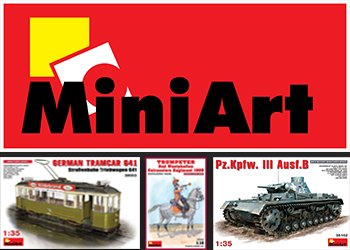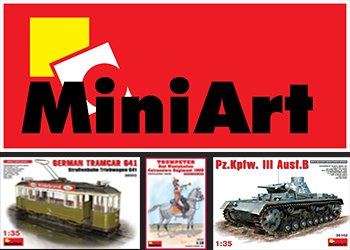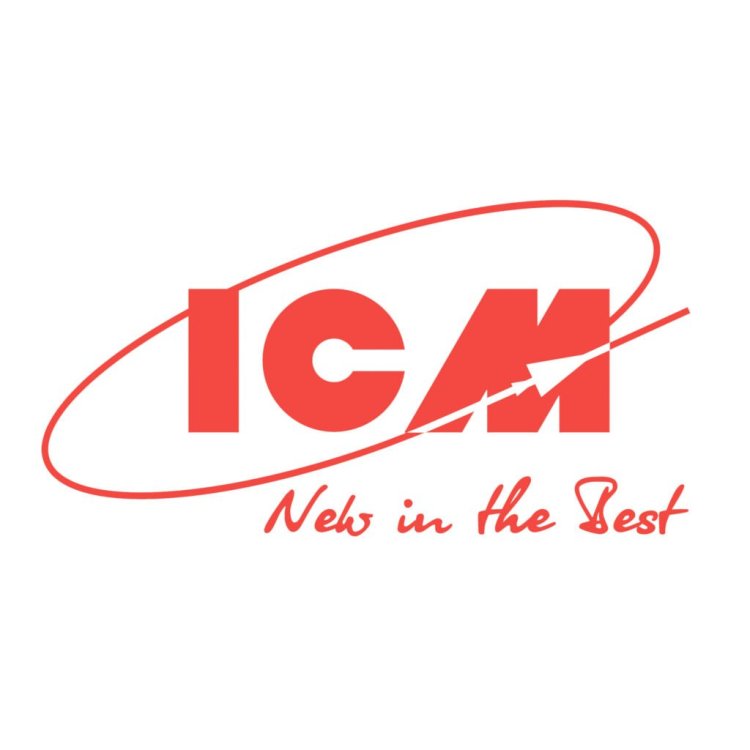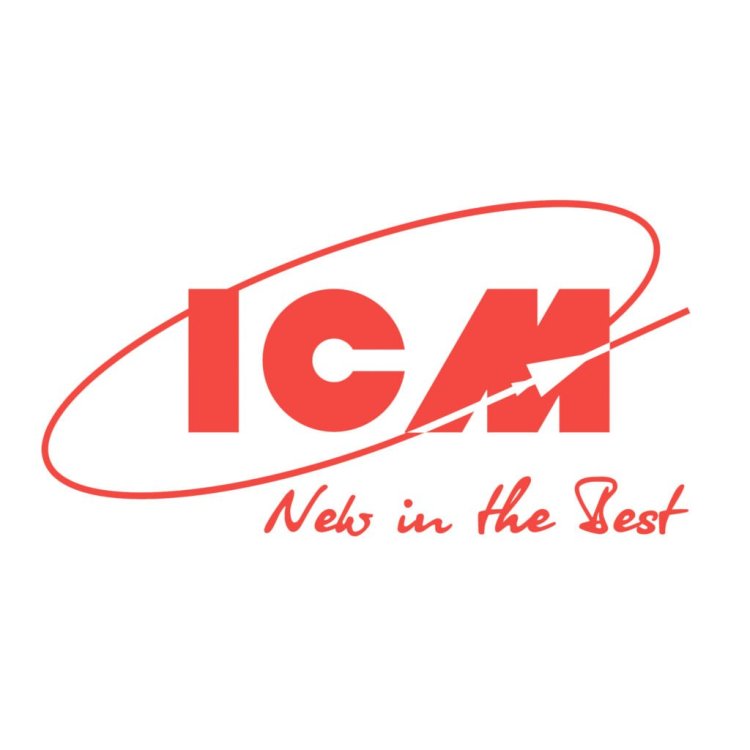The Great LSM Twins Group Build ends Aug 31, 2024
×
-
Posts
2,148 -
Joined
-
Last visited
Reputation
2,221 ExcellentAbout Fran

- Birthday 05/24/1979
Profile Information
-
Gender
Male
-
Location
Porto, Portugal
-
Interests
WnW!!!
Ohhh.... and WWI, WWII, Aircraft and armor.
Recent Profile Visitors
9,009 profile views
-
Paolo RIP! A major lost to all his family and friends and to the modelling community. You will be missed.
-
1:35 M3 Stuart Initial Production Interior Kit MiniArt Catalogue number n.º 35401 Price tag: 54€ To buy one click here. In fact, the M3 Stuart is a very well know light tank for all modeler, but still a brief resume from wikipédia. “The M3 Stuart/light tank M3, was an American light tank of World War II. An improved version of the tank entered service as the M5 in 1942 to be supplied to British and other Commonwealth forces under lend-lease prior to the entry of the U.S. into the war. Afterwards, it was used by U.S. and Allied forces until the end of the war. The British service name "Stuart" came from the American Civil War Confederate general J. E. B. Stuart and was used for both the M3 and the derivative M5 light tank. Unofficially, they were also often called "Honeys" by the British, because of their smooth ride. In U.S. use, the tanks were officially known as "light tank M3" and "light tank M5". Stuarts were first used in combat in the North African campaign; about 170 were used by the British forces in Operation Crusader (18 November – 30 December 1941). Stuarts were the first American-crewed tanks in World War II to engage the enemy in tank versus tank combat when used in the Philippines in December 1941 against the Japanese. Outside of the Pacific War, in later years of WWII the M3 was used for reconnaissance and screening. Observing events in Europe and Asia during World War II, American tank designers realized that the light tank M2 was becoming obsolete and set about improving it. The upgraded design, with thicker armor, modified suspension and new gun recoil system was called "light tank M3". Production of the vehicle started in March 1941 and continued until October 1943. By the standards of the era for light tanks, the Stuart was fairly heavily armored. It had 38 mm of armor on the upper front hull, 44 mm on the lower front hull, 51 mm on the gun mantlet, 38 mm on the turret sides, 25 mm on the hull sides, and 25 mm on the hull rear. Like its direct predecessor, the M2A4, the M3 was initially armed with a 37 mm M5 gun and five .30-06 Browning M1919A4 machine guns: one coaxial with the main gun, one on top of the turret in an M20 anti-aircraft mount, another in a ball mount in right bow, and two more in the right and left hull sponsons. Later, the main gun was replaced with the slightly longer M6, and the sponson machine guns were removed. The M3 and M3A1 variants were powered by an air-cooled radial engine, either a gasoline-fueled 7-cylinder Continental W-670 (8,936 built) or a 9-cylinder Guiberson T-1020 diesel (1,496 built). Both of these powerplants were originally developed as aircraft engines. Internally, the radial engine was at the rear and the transmission at the front of the tank's hull. The driveshaft connecting the engine and transmission ran through the middle of the fighting compartment. The radial engine's crankshaft was positioned high off the hull bottom and contributed to the tank's relatively tall profile. When a revolving turret floor was introduced in the M3 hybrid and M3A1, the crew had less room. A further 3,427 M3A3 variants were built with modified hull (similar to the M5), new turret and the Continental W-670 gasoline engine. In contrast to the M2A4, all M3/M5 series tanks had a trailing rear idler wheel for increased ground contact, whereas on the M2 the idler wheel was off the ground and did not aid in suspension. From https://en.wikipedia.org/wiki/M3_Stuart Probably as most of modellers, I do have a little soft spot for the Stuart. Its probably because of his “fragile appearance” comparing with other WWII tanks specially, the big ones for the Wehrmacht. To get this even better, this version as a full interior. Being MiniArt, you know that the parts and sub-assemblies will be in high number, but the detail in all will be exquisite. Let’s check if this release stand for those standards. Firstly, the plastic sprues come in gray plastic, very good to handle and work as all previous recent releases. And there is a lot of sprues, 21 in total (in these, one clear sprue – yes, in a 1:35 AFV model kit) Checking the sprue A, you “only” have the main body structures all there. So, a lot of carefully alignment and care must be taken even with the location points for all inside parts. That is a “minus” of having a full interior kit… I `m not complaining as I love these full interiors but is a thing that you should be careful with. The first major small details for the interior are in sprue D, Da and K. Despite the small parts (and there is a lot of them), the details are right there, with no flash and quite sharp, as you would expect form MiniArt. The engine (powered by an air-cooled radial engine, a gasoline-fueled 7-cylinder Continental W-670 (8,936 built) is amazing!! I`m not an engineer so I confess that when I saw the sprue C (and Ca) I thought for one second: “hum… an aircraft engine sprue here? It´s probably a mistake by MiniArt…” But no… So, the engine Continental W-670 engine sits between the two fuels tanks, making the engine deck quite busy. All the interior is very busy as it should be inside any tank so MiniArt achived the goal (as expect) of having an interior quite busy and with tons of details and you can just leave all hatches open… full beautiful interior to appreciate. Do AM have some space? I believe so, as always, but not much indeed. Now, Wheels and tracks… Well, no vinyl!! But it`s link-and-length. Personally, I like individuals links all the way but I prefer link and length than vinyl, so I can`t complain. Probably for me, here is one spot where AM guys will enter. As for the wheels, undercarriage and suspension system... now that`s a lots of parts and subassemblies.... and the clear parts... Yes, we do have clear parts on this beauty and even windshields whipers in PE As for the PE, comes, as usual, in a card envelope with MiniArt logo. The PE has several details, as PE clapping plate in the rear hatch, mesh, seatbelts (yes, for the driver), handles, clamps, idler wheels rims etc. The decal sheet is a rather small sheet but quite a colorful one, giving all the three markings and some stencils and instruments gauges. The color density and the thin paper are spot on so all good here also. As for the markings, you got straight from the box, four markings: - Royal Tank Corps, British Army, Tactical Training School, Egypt, Summer 1941; - 2nd Armored Division, Louisiana, USA, Autumn 1941; - 1st Armored Division, Rock Hill, South Carolina, USA, Autumn, 1941; - Unindenfined Cavalry Regiment, camp Funston, USA, Spring 1942; For the tow cable you only have the hollow end so you needc to get some thread to make the towing cables. The instructions booklet has 22 pages of full constructions with very good color indication all the way. Speaking of color indication, MiniArt gives the modeler a color chart with not one or two brands but 6 (six): - Vallejo - Mr. Color - AK RC - Mission Models - AMMO MIG - Tamiya THANK YOU MiniArt for such a comprehensive color charter and very good indication color along the instructions. Conclusion This M3 Stuart is a fantastic little kit with TONS of details. You can make a little very detail gem directly from this box! It’s an all in package and Kudos for Miniart for doing it. The recessed and raised detail, the detail on the engine all the compartments in a single box, directly with no extra whatsoever is fantastic! Of Course this in NOT a Weekend project! Not even a month project for me! 10/10 MiniArt!! Again! Thanks to MiniArt for producing the beautiful model kit.
- 4 replies
-
- 6
-

-
- miniart
- full interior
-
(and 2 more)
Tagged with:
-
Alb. and DH2 SOLD!
-
wow!!! I just saw this post Ernie!! Glad that you and family are all ok!!
-
wow!!! That`s is great!! Congrats Jeff and to her!
-
The ADH2 and the Albatross are now reserved...
-
1:48 P-47 D-30 RA Thunderbolt Advanced Kit MiniArt Catalogue number n.º 48029 Price tag: €48,40 To buy get it here. And we are back with MiniArt here on Large Scale Modeller. And to start this restart, nothing better that an 1:48 aircraft… Yes, MiniArt is not known for 1:48 Aircraft… (some what-if in 1:35, some little helis) but nothing with wings. But since last year, MiniArt is releasing a series of P-47 in 1:48, and with two lines: basic kit and advance kit. And today we are going to look to the brand-new P-47D-30RA Thunderbolt, advance kit. The advance kit is a bit more expensive that the basic kit but gives the modeler a lot of other options for detail like engine open (and more detail engine with new several plastic parts) wing gun bay open with some really nice PE, a seat without seatbelts to use the PE ones. Also give you 3 decals options and the basic kit line only brings two. This advance version gives the modeler the possibility to choose in making a basic line or advance line. Both choices are very good ones and invites modeler to get one of each at least. One advance to make it with all in and several basic line to make all those beautiful markings that you ever dream. Knowing MiniArt work in 1:35 AFV, anyone expect nothing but quality by MiniArt and lots of parts also. I always liked MiniArt gray plastic and this is no exception. It`s a good plastic to work with, very helpful with extrathin Tamiya cement glue and does not brittle easily. So, there is a quite lot of plastics parts with a lots of sub-assemblies. First that we can notice is the surface details of the fuselage and the wings…. Gorgeous.! All the rivets are present and fantastic raised and recessed detail. Having P-47 from other brands (Hasegawa, Academy and Tamiya) this one is the one who has the better, by far, surface detail of all. Kudos MiniArt. But this exquisite detail is present in all the model, cockpit parts, wheels bay and engine (the engine is fabulous even the basic version) are great pieces of fine and impeccable detail. Checking all sprue and starting with the sprue E. This sprue is for sure different from the basic version as the top panels are removable so you can show the wing gun bay in all beauty. It`s a crime not to do it! The sprue Gc has the main parts for the engine. There’s a lot of sub-assemblies to make this fantastic engine that you must leave it open… MiniArt even gives you separate cowling sections that will be handy to expose the engine. Well you have the option in closing the engine but…. For that go for the basic kit option. I know I will in some marking I want to do that the nose art is a center piece! The engine has fantastic detail straight from the box with the PE adds up given by MiniArt. Yes, you can detail even more, specially with some wires and some connectors that you now can get in 3D printing but that is for the ultra detailers. The cockpit (sprues B, Db and E). It’s another piece of detail art! The side panels and console are very good molded with superb surface detail. You can choose the seat with the seatbelts on or the seat and use the PE seatbelts that come in the advanced version. One quite fantastic extra detail: the landing gear with two position, chassis normal or chassis under load, as included all possible external equipment for this aircraft. A wonderful detail, quite realistic, to have a P-47 with different heights. and weight as you get a full load to put on the P-47 The Tail wheels come with two options. The PE sheets in full brass looks a bit more stick that the usual PE I see from Eduard for example. However, the detail on the PE looks good (seatbelts) the other pieces area complementary detail on the engine, wing gun bay and cockpit. I would probably would go to an AM seatbelts like ASK seatbelts but that is me. You can get a good replica straight from box. The clear parts are present in a separate bag to not have any danger of risking it. The parts are in fact quite clear with no distortion and makes the possibility to left the canopy open which is great specialty with all the cockpit detail. The Advance kit version doesn’t have any templates to mask the clear parts but the P-47 canopy is quite easy to mask even without masks. The decals. First are printed by Cartograph so the quality on application and color registration are granted. Second, these are beautiful draw by MiniArt. They look spot on. And the schemes are perfect. Speaking of schemes, this model box gives you 3 options that are: · 366th Fighter squadron 358th Fighter Group “Orange Tails”, 9th Air Force, Spring 1945 Pilot: Lt. Ike Davis. · 509th Fighter Squadron 405th Fighter Group, 9th Air Force, Germany, May 1945, Pilot Capt Milton William Thompson; · 379t Fighter Squadron, 362nd Fighter Group 9th Air Force, Germany Spring 1945. Pilot Col. Josesph L. Laughlin You got two sheets so if one is with markings and nose art, the other is full of stencils. As usual from Cartograph, the printing is very good with the letter being quite perceptible even in 1:48. Well now passing for the instructions. I do have a lot of Miniart kits and already made several reviews and this manual is a typical MiniArt manual which means that is a quite good instructions manual with good color indications and a good parts indications and constructions indication of parts gluing connections. This one has 21 pages and kind of 44 steps (with a lot of sub-assemblies steps) and the profiles in full colors and in all sides which is great to help put place the decals (a lot of them specially the stencils). I leave here a few more pictures of the remain plastic... It`s pure modelling parts. CONCLUSION Well, this advance kit MiniArt P-47 D is in fact, the best P-47 in any scale, straight from the box. And now that is not an easy thing or an achievement easy to get as the rivals are Tamiya, Hasegawa, Trumpeter… and more recently Dora Wings (also a great kit). All of thn make very good P-47, but none will give all the detail you can get diretlly from the box that MiniArt P-47 gives you. The recessed and raised detail, the detail on the landing gear and the option of airborne/no airborne landing gear, the engine, the movable surfaces and all that in a single box, directly with no extra whatsoever, is the receipt for the best P-47 model available. 10/10 MiniArt!! Perfect box!! Thanks to MiniArt for producing the beautiful model kit.
-
New prices and new kits
-

LSM Modelling News 2023 merged Fran and Artful69’s threads
Fran replied to Fran's topic in Modelling Discussion
And... here it is: 1:32 HpH Models BV 138 Price tag: 675€ http://shop.hphmodels.cz/en/model-kits-in-scale-132/226-blohm-voss-bv-138.html -
ICM 1:48 WWII German Aircraft Armament (Catalogue number: 48408) Price Tag: 15,80€ ICM is a quite prolific model manufacture, releasing AFV, Airplane and figures. And now also accessories in 1:48 and a very important one: ordnance. The name “armament” is not truly the best one to get a set of bombs… Armament is more direct to defensive guns or cannons (as attacking guns). These are bombs so I think the more accurate term would be: WWII German Aircraft ordnance. Ordnance is the term often used when describing the payload of air-to-ground In this set, you get 6 types of bombs (range of bombs from 50 to 2500 kg) and two torpedos with a trailer each.. All parts have no flash at all, and the surface detail is quite good so you get several options to use in more than one or two dioramas or vignette alongside your airplane. A quite large decals sheet is given with bomb markings! The instructions are very clear and easy to folow. The cloor indication is good with only ICM range color given. Conclusion So, everything you need to get some really looking WWII German bombs is here. Either to put directly on an aircraft or side by side to an aircraft, it´s always a a bonus to your model as these have crispy surface detail and several range of bombs. Very usefull set to all aircraft modeller. Great Work ICM! Keep Then coming! HIGHLY RECOMMEND. Our sincere thanks to ICM for making this fantastic figure set. Francisco Guedes www.largescalemodeller.com
-
ICM 1:48 WWII Japanese Pilots and Ground Personnel (Catalogue number: 48053) Price Tag: 11€ ICM is a quite prolific model manufacture, releasing AFV, Airplane and figures and now in 1:48. This set is n 1:48, perfect to be aside their Ki-21 that appear on the box art of this set. This set gives you five figures, in the poses that you can see in the box, and a small ladder. All parts have no flash at all, and the surface detail is the best I ever seen from ICM This set is brand new and you can tell te improment of the mold work with very sutble details on the cloths and on the faces with less seam line from the mold. It´s quite notice the improvement work made form ICM! The figures have the torso in one piece without arms or legs as they are separated Well done ICM! No assembly instructions are given… but if you look carefully we see the parts numbers on the figures. So there´s is assembly instructions. Conclusion You can really get a very good figure from this set, using all together or just one as the posture could be used in several other scenario with their Ki-21 Sally or any other 1:48 Japanese aircraft. There a lot of possibilities with this set to make your 1:48 Japanese aircraft stand on the next model show or week meeting club. Great Work ICM! Keep Then coming! HIGHLY RECOMMEND. Our sincere thanks to ICM for making this fantastic figure set. Francisco Guedes www.largescalemodeller.com
-
Fran started following Wingnut Wings - 1:32 for sale
-
For sale 199€ each (or a trade one for the Fe 2 B Late type) Plus shipping (Europe around 28 to 35€) Payment - Paypal (family and friends), Revolut.
-
ICM 1:35 Prayer before Battle “You are important to God” (Catalogue number: 35616) Price Tag: 17€ ICM is a quite prolific model manufacture, releasing AFV, Airplane and figures. For me is the first figure set I review (not counting the combo ones) from ICM but Its not the first time I see an ICM figure. This set gives you five figures, in the poses that you can see in the box art, a piano, the bench and some religious artifacts. All parts have no flash at all, and the surface detail is quite good so you can really get a very good figure from this set, using all together or just one as the posture could be used in several other scenario. The figures have the torso in one piece without arms or legs as they are separated with the exception of the Priest. This one only has the feet separated as the priest cassock is in one piece and very well molded. The facial expression is appropriate for the prayer moment. The overall detail of all figures is very good but I will have to stand out the priest. The general approach is very interesting and well done. The clothing detail with ecclesiastical coat of arms on lapels in a surface detail and the Bible in the other hands are fantastic details. But to complete these details a gorgeous decal sheet with very good coloration with religious symbols is just the top notch for detail. Wel done ICM! The piano looks great (I´m not a piano expert at all) and if you don’t to paint the 1:35 piano keys, a perfect decal is given for that dauting task. 😊 The instructions is one sheet A3 size with color indication for the figures with a complete figure with the parts indicated. Not my favourite option of instruction but it will do for the intermediate modeller. Conclusion It´s a great five figure set that it would be perfect with the 1:35 ICM WW2 British Army Mobile Chapel (35586) (that we reviewed here) or with other 1:35 vehicle or even an 1:35 airplane. Or simply make a vignette with it! There`s tons of possibilities with this set and none of those possibilities are common scene in the modelling world until now! Great Work ICM! Keep Then coming! HIGHLY RECOMMEND. Our sincere thanks to ICM for making this fantastic figure set. Fran www.largescalemodeller.com
-
1:35 Beobachtungspanzerwagen Sd.Kfz 251/18 Ausf.A ICM Catalogue number 35105 Price: around 41,50€ ICM keeps launching new kits every month, or new variants of their pre-existing kits. If we just review a brand new 1:48 B-26, now a new variante a Sd.Kfz 251/18, the Beobachtungspanzerwagen, which means “Observation armored car” And that is explicit by the boxart. So another model kit that is original and kudos to ICM to not be afraid of releasing these more unusual model kit. As I said, this is base on the ICM released in 2018 and was review back then by our Jim Hatch, here. So I don’t have much to say beside that but here it goes. But, as usual, let`s crack the box. The package is the usual from ICM, with flip top cardboard with a separate card lid showing the artwork, a lovely artworks as usual. I don’t know who makes the ICM box arts but I do like them. Not my favourites but I do like them. First of all, this model kit is in fact, a sort of combo kit as you have the Beobachtungspanzerwagen Sd.Kfz 251/18 Ausf.A and a set of figures, more specific, the German Command Vehicle Crew (1939 to 1942) - set n.º 35644 and WWII German observer officer. So you got 5 figures inside this combo. The sprues come as usual in resealable plastic bag and they are seven ones. The original release seen on Jim`s review had only 5. So the extra two new sprue for the Sd.Kfz 251/18, are the J and H. Checking the plastic, which is quite good to work with, as is consistent and not brittle at all. The total parts are 315 but not all will be used I reckon. Before I check the new sprues, let me waddle around the sprues. As usual, the surface detail on ICM is quite good, and this model as a full interior… Also as usual, you can make a very nice replica straight from the box. The ones who would like some extra detail can get PE and resin but straight from the box you already get a very nice detailed replica. And this is the ICM is looking forward and they are consistent making it. Kudos to them. I really the Maybach HL 42 6-cylinder petrol engine. This is an AFV model kit but it does have quite a few clear parts. ICM clear parts are one of the best in the modelling world (just check the clear parts on the He-111 or on the Ki-21 Sally), so these one are no exception. The tracks and wheels. The front drive wheels and the tracks are in black vinyl. It`s not the first I said this, but I don’t like vinyl track and wheels only because of painting and weathering but it`s me. Although these ones have good detail and the tracks are not link by link. However, for me, it`s not a break deal, but I would try to get some new metal/resin tracks and new wheels. The construction is quite straightforward and I like how the lower section is made, giving much less room to mistake in the alignment. In fact, the same thing can be said about the upper section! There’s not much to say as Jim`s hasn`t said… Now checking the new kit parts to make the observation version. The J sprue is the observation deck on the top of the vehicle. It´s in fact what same the vehicle profile. So you get some “deck” steel platform, some binoculars (those fix on the vehicle) and a large antenna. Now you are thinking…and the H sprue is for what? Radio station! A radio console to be in back on the vehicle. The detail on the dials and buttons and for the isntruments ICM give some white decals to put. Here I think the detail on the decals could be a little better with some detail on the dials (sort of number, indicator) than just plain white. But this is a very minor detail and you, as I already said a very good replica form the box. The decal sheet is design by ICM, produce outsourcing. but has a good colour registration and all the plates and symbols to make the three version of the box which are: - Beobachtungspanzerwagen Sd.Kfz 251/18 Ausf.A, 1st Panzer Division (1.Pz.D.) France, 1940; - Beobachtungspanzerwagen Sd.Kfz 251/18 Ausf.A, 1st Panzer Division (1.Pz.D.), unknow subdivision, Belarus, 1941 - Beobachtungspanzerwagen Sd.Kfz 251/18 Ausf.A, 1st Panzer Division (1.Pz.D.) Eastern Front, 1942; The instructions booklet with 32 pages, is typical ICM instructions, very clear. Only ICM colour chart, but these paitns are coming more available and I already try with a brush and I was surprised with the pigmentation. I will make more tests and with airbrush. Next, the figures. There`s no box whatsoever as this is a combo. You got five figures and there`s sprues diagram and painting instructions. Not assembly instructions are given… but if you look carefully we see the parts numbers on the figures. So there´s is assembly instructions and it shouldn’t be hard to do… The figures in plastic from ICM are very good. ICM plastic is very good Even the faces are very detail, which is quite difficult in injection plastic. There`s the seam line mould that is need to be removed but with care and patience you get a good result. That seams line is from the moulding so is inevitable. But if it easy to be remove on legs, arms, is not that easy on the face and specially on hands. So take your time… or if you want to get the best of the best of these figures, just get hands and faces in resin (Hornet are the best ones for me). As for the detail, and starting with the clothes I think that are quite well reproduced, but not being a Vietnam clothes specialist, I `m quite happy with the detail. Not as sharp and clear detail as resin but still, very good for plastic. The posture and body positions are quite convincing and very well reproduce making all the figures in a natural pose which is a quite hard task to do. The hands of all figures are very well made for injection and as I already said, with care and patience to remove the seam line you will get a good result Also, these figures are independent of each other, so you can chose to use all or only one or two. Conclusion Well, another great model kit from ICM!! It’s a super AFV model, superblydetail with full interior with trew option to the modeler. The construction is well thought to help the modeler with the alignment. This combo is begging to be put in a little diorama. You just need to make a base! It`s a superb kit! Highly recommend It`s 9,8 out of 10. My sincere thanks to ICM for making this fantastic model kit.










